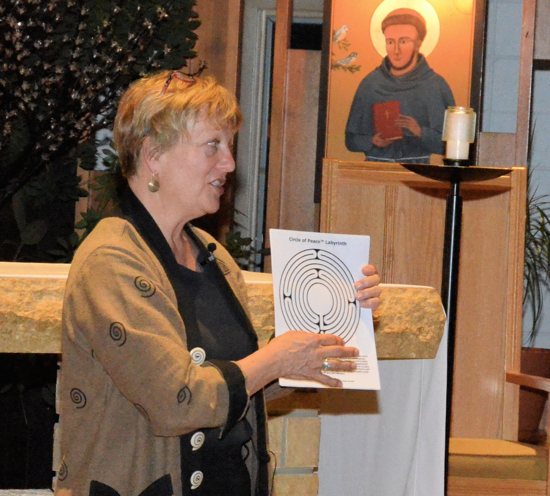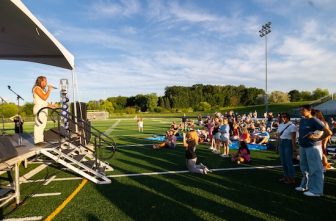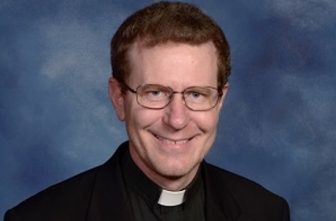
The words “labyrinth” and “maze” are often used interchangeably, but they’re not the same thing, Lisa Moriarty said, holding up paper examples of each.
A maze, she explained, is designed to trick and confuse, prompting the application of problem-solving skills.
A labyrinth, on the other hand, may look confusing, but it has only one path to the center, as winding as it may be.
“All you need to do is put one foot in front of the other and stay on the path, and you will get to the goal,” she said.
A labyrinth designer from Stillwater, Moriarty spoke to about 35 people at Franciscan Retreats and Spirituality Center in Prior Lake April 20 on “Labyrinths, Ancient Paths of Peace.” As part of the retreat center’s 50th anniversary, its leaders have commissioned Moriarty to design and install a labyrinth on its grounds in May.
Despite their contemporary appeal, labyrinths’ use in Christianity is centuries old. Catholic churches adopted the ancient art forms in the Middle Ages, and scholars theorize that they may have symbolized a person’s spiritual journey and even served as micro-pilgrimages for faithful who couldn’t venture to Jerusalem. Among the most famous is the one inlaid in the floor of Chartres cathedral in France, but others were constructed in churches in Algeria, Spain and Italy.
Although most people associate labyrinths with walkability, most of the earliest labyrinths — which predate Christ by as many as 2,000 years — were small carvings. They appeared in cultures around the world, from Russia and Egypt to Peru and Nepal. It wasn’t until the Middle Ages that they regularly became spaces in which people could move, Moriarty said.
Medieval walkable labyrinths were also used outside of Christian contexts, Moriarty explained, pointing to Swedish fishing communities where fishermen walked labyrinths for luck or to superstitiously trap trolls whom they believed could interfere with their catch.
This past and current use outside a Christian context has raised concerns among some that contemporary labyrinths are solely New Age tools. Catholic experts say that while labyrinths can be used for non-Christian purposes, their appropriateness for Christian prayer depends on the context and user’s intentions.
Contemporary research into labyrinths as prayer tools has sparked a revival of interest and construction. The Twin Cities has more public labyrinths than any other metropolitan area in the world, Moriarty said.
While Catholics aren’t more likely to commission labyrinths than other Christian denominations, several can be found in local Catholic churches — including the Basilica of St. Mary in Minneapolis, St. Patrick in Edina and St. Thomas Becket in Eagan. Others are in parks, hospitals and cemeteries. Some local schools use labyrinths to teach conflict resolution skills, Moriarty said.
A Lutheran and consociate of the Sisters of St. Joseph of Carondelet, Moriarty emphasized that there’s no right way to pray in a labyrinth. Typically, a person choses an intention, prays as he or she navigates the path, and upon reaching the center, pauses for more prayer before reversing the route.
Conventual Franciscan Brother Bob Roddy, Franciscan Retreats’ director, said the graces he’s received from praying in labyrinths inspired him to commission one for the center’s retreatants.
“I’ve done it many, many times on retreats and find it just a really calming, healing kind of process,” he said. “It’s really an emptying. As you focus on just walking and whatever intention you bring in there, everything else just moves off to the side.”
The labyrinth at Franciscan Retreats will include a grassy path outlined with bricks in a spot already shaded by an arc of trees. The center is looking for about 25 volunteers to help construct it May 14.
“It will just give people another tool to enhance their prayer experience here — to calm themselves, to focus and to listen,” Brother Bob said. “We’re surrounded by so much noise . . . so finding ways where people can experience quiet and can slow themselves down is so critical.”
Editor’s note: This story has been updated for clarity.




